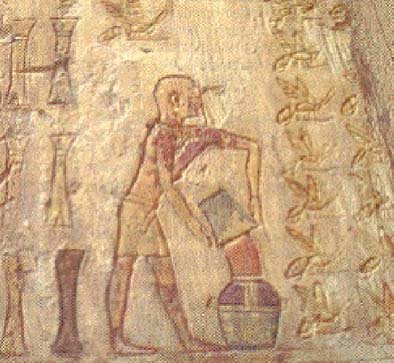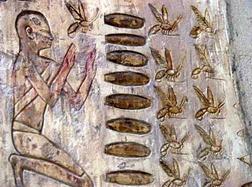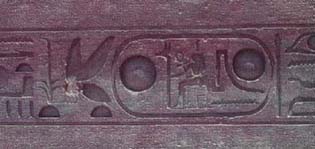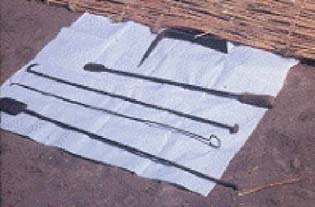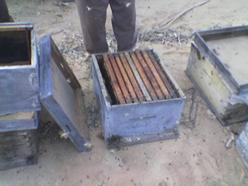Hossam Farag Abou-Shaara
Assistant lecturer at Faculty of Agriculture, Damanhour branch, Alexandria University, Egypt.
Member of the International Union for the Study of Social Insects (IUSSI)
North American Section (NAS) & Central European Section (CES)
go to: Part 2
Egyptian Beekeeping
part 1
Beekeeping History in Egypt:
Egypt is one of the oldest countries in the world in beekeeping sector. The
oldest drawings and paintings on tombs and other monuments in Egypt clearly show
how beekeeping is old in Egypt. The Ancient Egyptians, old people of Egypt, not
only built the pyramids and sphinx but also kept bees from about 2400 B.C. where
the earliest drawings of beekeeping and honey preparation have been seen in
Egyptian temples.
Beekeeping in ancient Egypt was characterized by using cylindrical hives,
migratory beekeeping using rafts down the Nile River and production of huge
amounts of honey. Ramses III was able to offer the Nile god some 14000 Kg of
honey as a sacrifice about 1180 B.C.
|
|
|
|
The Great Pyramid of Egypt |
Pyramids and Sphinx in Giza region |
|
|
|
|
Honey poured into a vessel |
Beekeeper and ancient hives (tomb of Pabasa) |
|
|
|
|
Honeybee and Ramses II |
Beekeeping activities in ancient Egypt |
The native honeybee in Egypt is
Apis mellifera lamarckii, the Egyptian honeybee. This honeybee race is small in
size with yellow color. The abdomen of workers, drones, and the queen is striped
by black and yellow lines. The Egyptian honeybee is very aggressive, has a large
swarming tendency, adapted on Egyptian conditions, and resistant to most
diseases. Not much study was done on the Egyptian honeybee.
Beekeeping today in Egypt:
Egypt today is considered the most important country in beekeeping sector in the
Middle East, among Arab nations and Africa. The number of hives is about 1344000
and there are about 7700 mud hives (old hives). The number of beekeepers in
Egypt is about 270000.
Not many women work in beekeeping (in mud tube hives only) and only in Upper
Egypt. In ancient Egypt, women didn't work in beekeeping but used to use honey
and wax as preparations for skin beauty.
|
|
|
|
Mud tube hives |
Tools for mud hives |
|
|
|
|
Mud apiary in Assiut region |
Modern wooden hive |


